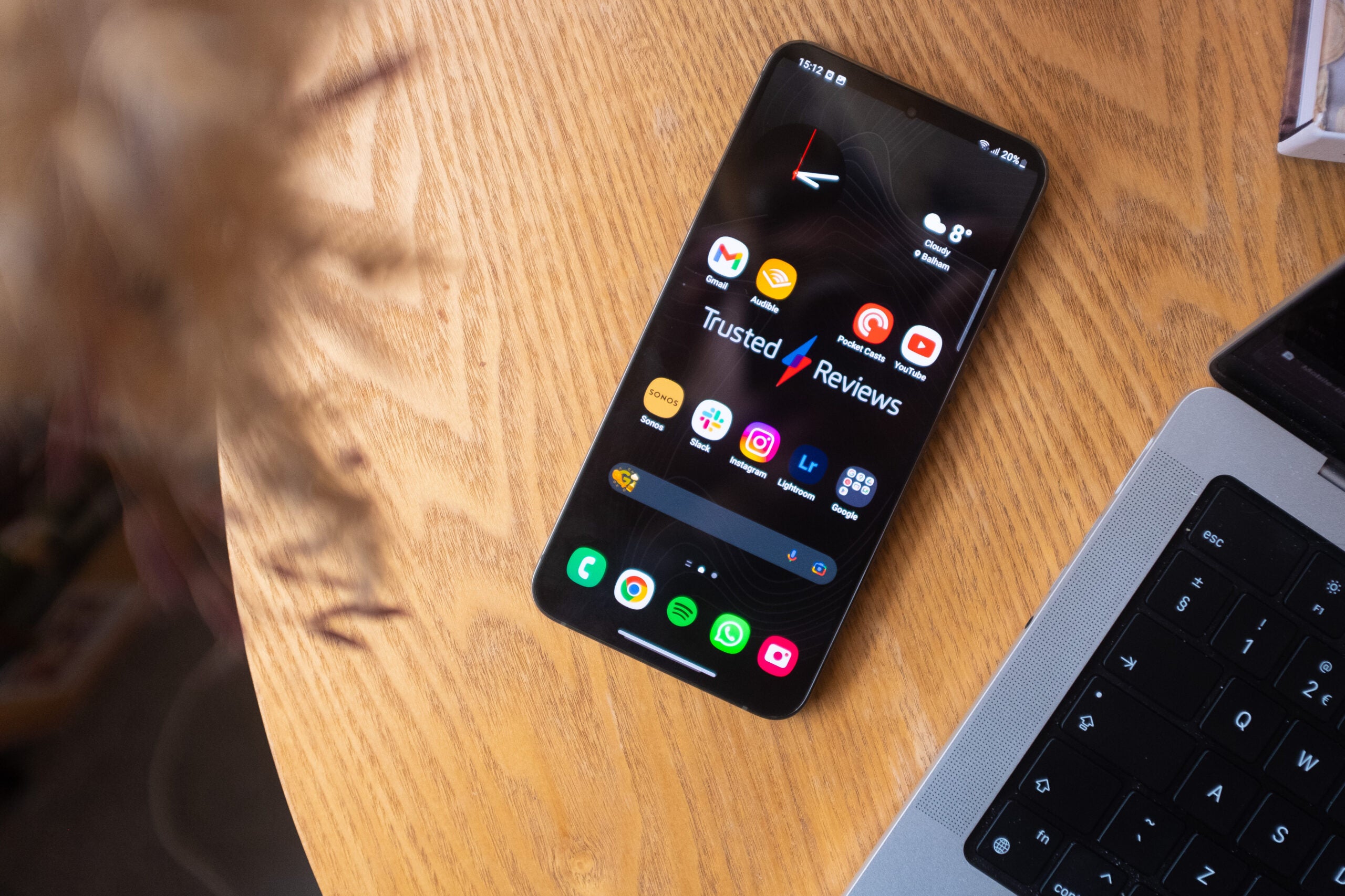Verdict
The Samsung Galaxy S23 Plus ticks a lot of boxes. It has a good, big screen; versatile camera and long battery life. This might not be the most exciting phone of 2023, but it’s a reliable device to have by your side.
Pros
- Perfect size
- Long battery life
- Years of software updates
Cons
- Takes an age to charge
- Camera is good, but struggles to standout at this price
- A sharper resolution would have been nice
Availability
- UKRRP: £1049
- USARRP: $999
- EuropeRRP: €1219
- CanadaRRP: CA$1209
- AustraliaRRP: AU$1649
Introduction
Larger than the regular Galaxy S23 and lacking many of the high-end features of the Galaxy S23 Ultra, the Samsung Galaxy S23 Plus finds itself in a little bit of a tricky spot.
The Samsung Galaxy S23 Plus is the middle child in so many ways, offering a 6.6-inch AMOLED display, triple camera setup and Qualcomm’s special ‘Snapdragon 8 Gen 2 for Galaxy’ chipset. It’s very similar to the S23, just with a slightly larger screen.
Is it a worthy upgrade to last year’s Galaxy S22 Plus, or should the pricier Samsung Galaxy S23 Ultra prove to be a smarter purchase?
Design and Screen
- The design closely mirrors the Ultra model
- Good display, though not as fully-featured as you might expect for the price
- 6.6-inch screen size sits in the middle of Samsung’s S23 line
The Samsung Galaxy S23 Plus is the middle child in the Korean brand’s 2023 flagship smartphone line, offering a bigger screen than the compact Galaxy S23 but fewer features than the pricier S23 Ultra. It’s easiest to think of this as a larger S23, as the Ultra model feels very distinct, with its curving screen, S Pen and flagship camera experience.
Samsung has clearly attempted to bring the series closer together this time around. The S22, for instance, looked radically different to the Ultra model – while the S23 Plus inherits the simpler camera design first introduced with the S22 Ultra. There’s no camera housing as such, with the three lenses protruding from the phone’s back. The sides are slightly flatter too, giving an overall look that’s not a million miles away from an iPhone 14.
When my colleague Lewis reviewed the smaller S23, he noted that he found the design “a little too minimalistic” for his tastes. Personally, I see this as a huge plus and I much prefer the subtle looks here to a garish phone like the OnePlus 11 with its massive camera module. But if you prefer something that stands out a little more the S23 Plus probably isn’t that phone.
I was a little disappointed with the colour options on offer, though. My green review unit is nice – dark and moody – though the purple, cream and black all lack punch and vibrancy. They’re just all a bit dull.
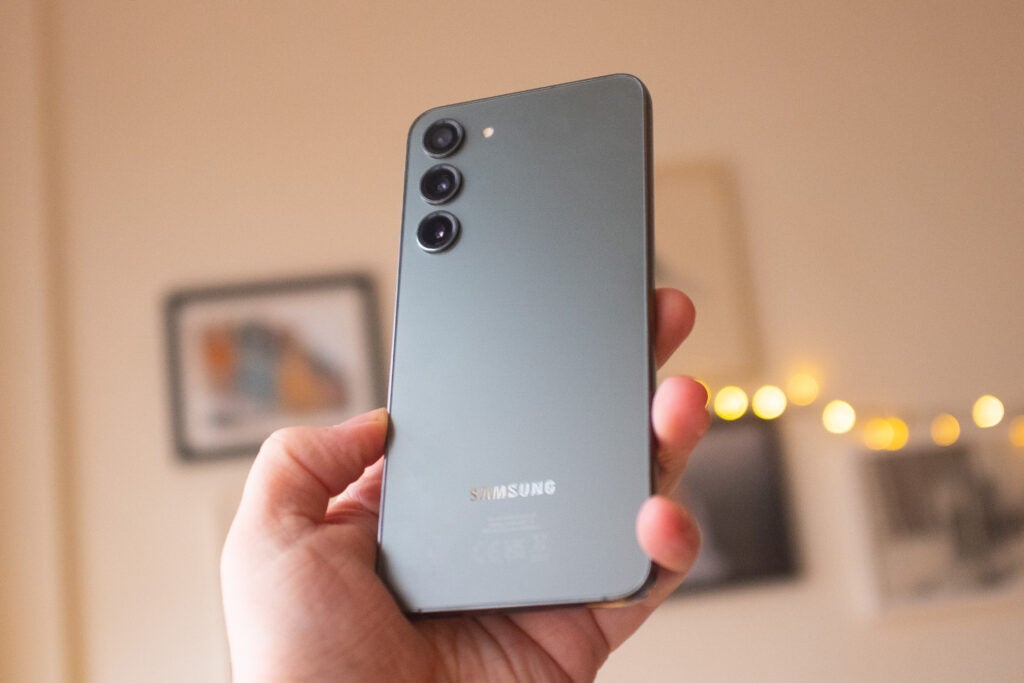
All the usual mod-cons are here: IP68 rating, Gorilla Glass Victus 2 on both the front and back and dual-SIM support in certain territories. It’s also finished to a very high standard, with all the buttons and USB-C port perfectly chiselled. I do expect this on a phone that costs nearly a grand, but it’s far from a given.
At 196g, the Galaxy S23 Plus is lighter than the smaller iPhone 14 Pro and it feels great to use. This size just feels so right – giving you more room than the, in my opinion, cramped S23 but without the hand gymnastics required to comfortably use the 6.8-inch S23 Ultra.
The 6.6-inch screen matches the specs of the smaller S23, rather than the S23 Ultra. That means the resolution sits at 1080p (rather than 1440p) and the lack of LTPO tech means the refresh rate can’t drop all the way down to 1Hz. For a phone of this price, it is a shame the screen is lacking some of these tricks you’ll find elsewhere.
The 1080p resolution is absolutely fine on the smaller 6.1-inch Galaxy S23, and for most people, it’ll be more than adequate here too. Pop it next to the sharper OnePlus 11 or S23 Ultra and the difference is notable, though – details pop a bit more and the overall viewing experience is more immersive elsewhere.
The 120Hz refresh rate might not be able to drop to 1Hz, though in my testing I have found it seems to go as low as 48Hz. This still offers a very smooth experience, zipping around when scrolling through websites or feeds.
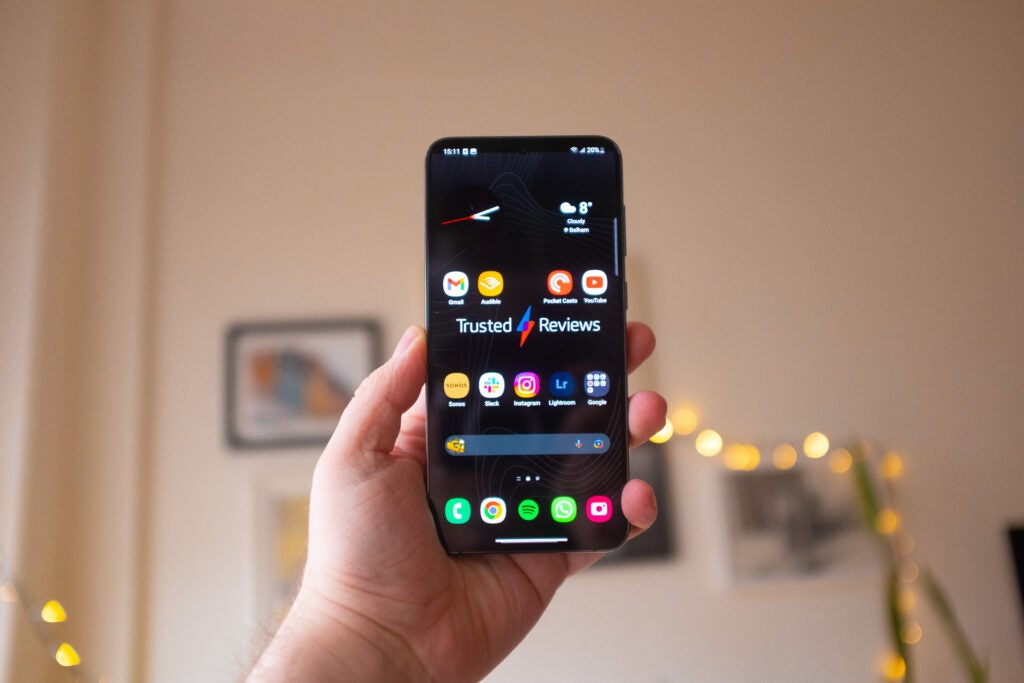
I’ve had no trouble using the S23 Plus outdoors in brighter situations and Samsung’s software does a great job of pumping up the brightness even further when the situation requires it. However, I wasn’t as impressed with the brightness when watching HDR footage played back on Netflix.
Next to the Xiaomi 13 Pro and iPhone 14 Pro, the S23 Plus struggles to really give those bright highlights and the brightness levels almost feel restricted. There is no Dolby Vision, a feature both of those other phones have, instead Samsung relies on its preferred HDR10+ format. This is a very niche criticism I know, but if you use your phone for a lot of media consumption – and considering the quality of these panels it’s often hard not to – then it could be a deciding factor.
Performance
- Qualcomm Snapdragon chip used worldwide, no Exynos version
- 8GB RAM, up to 512GB storage
It’s finally happened – Samsung has decided against shipping different versions of the S23 line, ditching its own Exynos chipset for a slightly tweaked version of the Qualcomm Snapdragon 8 Gen 2 you’ll find in many of the best Android phones arriving in 2023.
Samsung and Qualcomm have cleverly branded this chip Snapdragon 8 Gen 2 for Galaxy, giving the idea it is superior to the chip powering the Xiaomi 13 Pro or OnePlus 11. In reality, while the clock speeds might be slightly higher, general performance is very much the same.
This is a very fast phone, one that’s supremely capable of handling anything I could throw at it during the review process. The only game that felt like it was taxing was maxed out Genshin Impact, but then this is the case on anything but an iPhone.
You can see how the S23 Plus compares to some of the competition in synthetic benchmark tests below.
Unlike many phones running the 8 Gen 2 chip, I haven’t found the S23 Plus to get hot under load. In fact, the only time the phone got even the slightest bit toasty was when I was running benchmarks (something most will likely never do) or charging while playing a game.
Oddly, Samsung seems to have decided against enabling support for WiFi 7 – a feature included on other 8 Gen 2 phones – limiting it to 6E. This won’t be an issue for many, but it will mean those who upgrade to newer WiFi 7 routers won’t be getting the most out of it.
Alongside that chip is 8GB RAM and 256 or 512GB of storage – choose the storage wisely as the microSD slot is no longer present. Many phones at this price can be found with 12 or 16GB RAM and while those figures look good on paper, I haven’t noticed anything that would cause me to bemoan the lack of more memory.
The Samsung Galaxy S23 Plus comes running Android 13 with the One UI 5.1 overlay. Samsung promises four years of proper Android version and five years of security updates – this is great to see, ensuring the phone should keep on running well for many years to come.
OneUI 5.1 is packed with features and generally works very well. There are multiple battery-saver options, many customisation settings and excellent native apps – Samsung’s browser, for instance, is so much better than Chrome. There’s also DeX for expanding the mobile experience onto a larger display.
There’s no doubt Samsung has crafted a very feature-rich operating system that, to me, feels distinct from Android found elsewhere. Personally, I feel it still lacks the design polish of Google’s interpretation of Android and Apple’s iOS with too many busy apps and ugly icons – still, it’s a lot better than it was a few years ago.
Throughout my two weeks using the S23 Plus it managed all the phone basics very well. I consistently got faster download and upload speeds on my home Wi-Fi network than on the iPhone 14 Pro Max and it managed to hold onto phone signal better too, especially in my flat where my Three service can often be very spotty.
Camera
- Three rear cameras, all very similar to the S22 Plus
- Misses out on the 200MP sensor found on the Ultra model
- Improved front camera
Samsung pushed mobile photography forward with the absolutely fantastic camera on the S23 Ultra. The 200MP sensor, paired with some excellent software, produces stunning images I often struggle to believe came from a phone. The story isn’t anywhere near as headline-grabbing with the Galaxy S23 Plus.
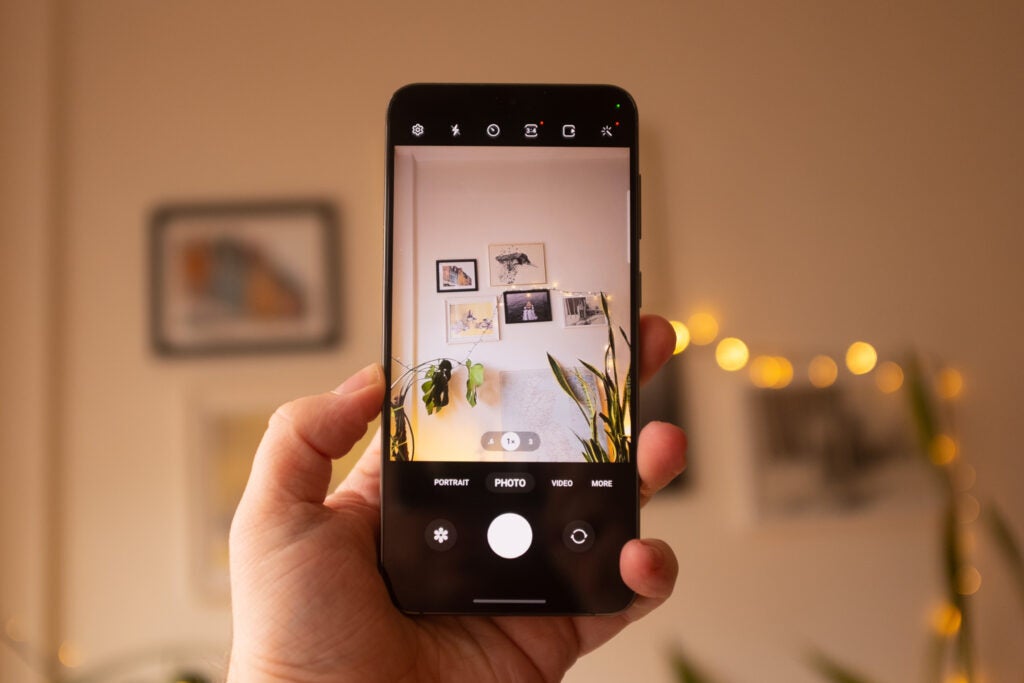
This is a capable smartphone camera array, with a main 50MP camera complete with dual pixel PDAF and OIS alongside a 12MP 120-degree ultrawide and a 10MP 3x telephoto with OIS. There’s also a better 12MP front camera for selfies.
On paper, this is basically the same as the outgoing S22 Plus, and the images I have captured don’t show much of a year-on-year upgrade.
Don’t get me wrong, the pictures are good – bright, sharp and colourful, yet they’re not better than cheaper phones like the OnePlus 11 or Pixel 7 and do little to really stand out. This is a £1000/$1000 phone, and I don’t think the camera really does enough to warrant that price, especially in such a tough market.

Shots from the main camera use pixel-binning tech and computational skills, taking a 50MP image and using all that data to push smaller images out at the end. Detail is pushed up, in typical Samsung fashion, with crowded scenes looking particularly sharp. HDR processing is good too, with plenty of difference between the lightest and darkest points.
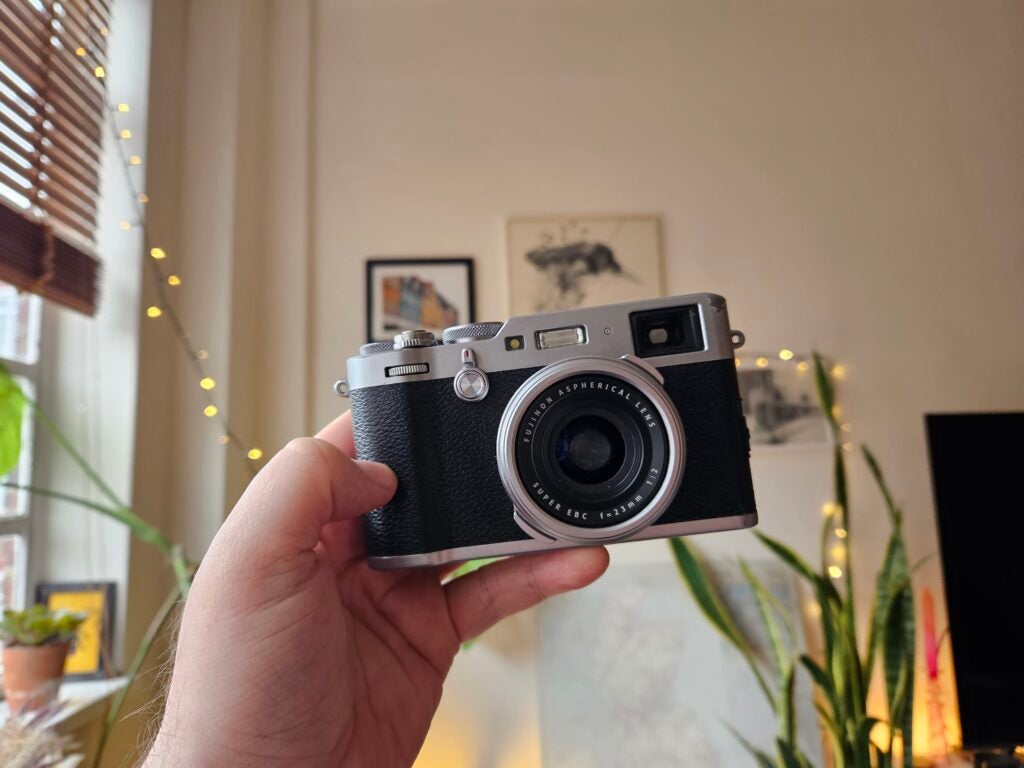
Samsung has a history of pushing up the saturation a long way on its phone cameras and that’s very much the case here. Greens, reds and brighter colours come out much more vivid than they are in real life. Whether you like this or not will be down to personal preference and Apple does it just as much on the iPhone, but it can make certain shots a little lurid. You can get a slightly more natural image by using the full 50MP mode in the Expert RAW app.
In low-light situations, the Galaxy S23 Plus does an adequate job. With a few light sources around – lamps or street lights, for example – pictures are detailed and avoid looking too noisy. Drop into even darker citations and the sensor’s shortcomings are more obvious.
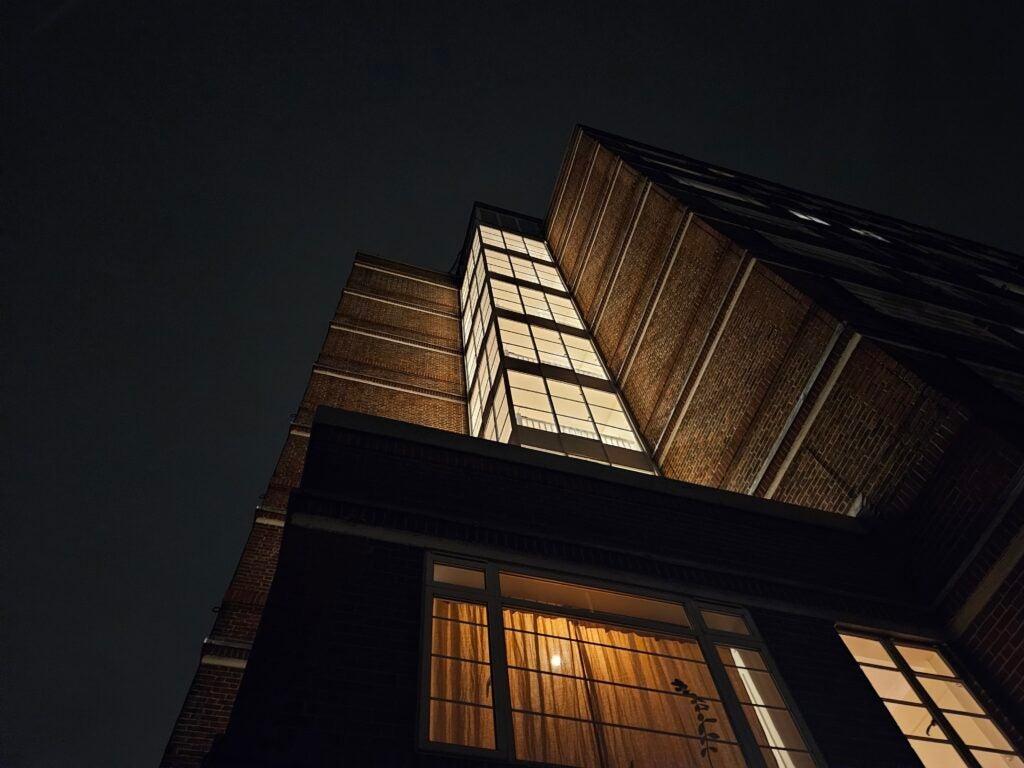
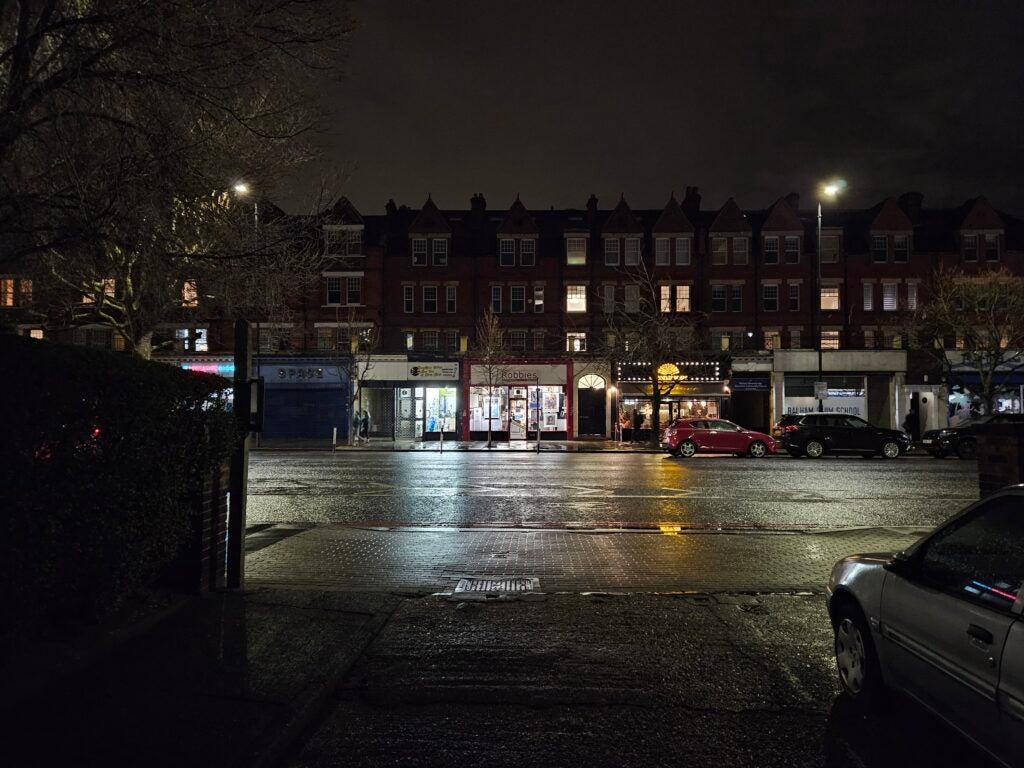

The secondary cameras offer a little more versatility, letting you get closer or farther away from a subject. Snaps from the ultrawide manage to match the colours from the main camera well, though this camera is best used in lighter situations as the image quality fades when it gets dark.
I was also impressed by the telephoto camera when pushed to 3X, though things can grainy quickly when pushed beyond that.

Video capture is another feature-rich area, with usable 8K capture supported.
Battery Life
- No charger included in the box
- Wired and wireless support
Inside the Galaxy S23 Plus there’s a 4700mAh battery which, when paired with a very efficient chip and 1080p screen, helps this to be a very long-lasting phone. I’ve rarely hit below 25-30% at the end of even very busy days – something I couldn’t always say with Exynos-based Galaxy phones.
Out of the three S23 phones, it’s the Plus that impresses the most with its endurance, even though the regular S23 and Ultra got our expert reviewer through full days too. While most people will still want to charge nightly, if you’re happy to tweak the battery-saver modes and remove options like an always-on display then two days of juice is doable.
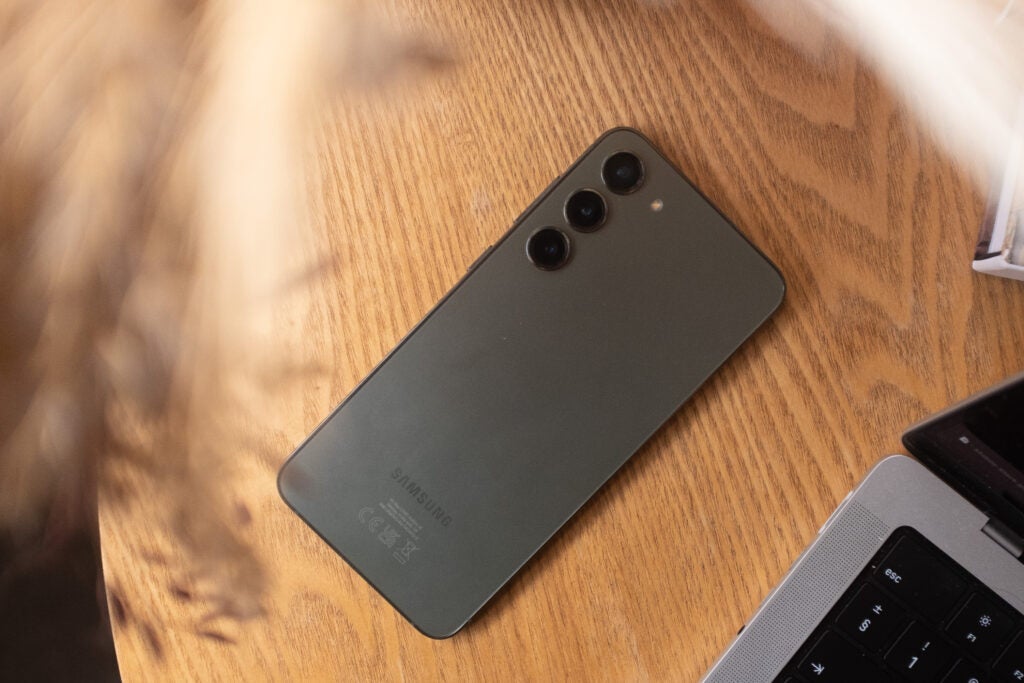
Samsung has done an excellent of eking efficiency out of this phone. Streaming an hour of Netflix at a very comfortable brightness saw a mere 5% drop, slightly better than the 6% drop we saw on the S23.
Samsung however remains behind the curve when it comes to charging, and the S23 Plus is one of the slowest Android phones I have tested in recent years to get a full 0-100% juice up.
Almost on par with the S23 and S23 Ultra, it took me 1 hour and 29 minutes to get a full charge, With 50% taking between 29 and 35 minutes. This is with a 45W Samsung charger that doesn’t come bundled with the phone.
Many Android phones, like the OnePlus 11, get a full charge in under 30 minutes and even some, the Realme GT 3 for example, can do it in under 10 minutes. This makes the Samsung S23 Plus feel a little archaic in comparison. Wireless charging remains very slow too.
Latest deals
Should you buy it?
You want a complete, no-nonsense Android phone: The S23 Plus might not excel in one clear area, but it’s very well-designed and performs excellently.
You’ve got a little extra to spend: With the Samsung Galaxy S23 Ultra offering a much better experience overall, if you can pay the extra then we’d advise you do.
Final Thoughts
The Samsung Galaxy S23 Plus is a very minor update for the series, and it does feel slightly overpriced for what’s on offer. You’ll get a better screen on the OnePlus 11, a better main camera on the Pixel 7 Pro and faster charging on the majority of the competition.
Yet, the S23 Plus still offers a very tempting package when everything is considered. This is a phone with a light, pocketable body; a big, bright screen and excellent performance. Software updates are promised for years, the camera is reliable and the battery life is very good.
For most, I think paying a bit extra for the Galaxy S23 Ultra or even going for the more fun Galaxy Z Flip 5 is the smarter move in the long term.
How we test
We test every mobile phone we review thoroughly. We use industry-standard tests to compare features properly and we use the phone as our main device over the review period. We’ll always tell you what we find and we never, ever, accept money to review a product.
Find out more about how we test in our ethics policy.
FAQs
While the phone does come with a USB-C to USB-C cable, you’ll need to provide your own plug. One that supports 45w charging will get you the fastest charging speeds.
Trusted Reviews test data
Geekbench 5 single core
Geekbench 5 multi core
1 hour video playback (Netflix, HDR)
30 minute gaming (intensive)
30 minute gaming (light)
1 hour music streaming (online)
1 hour music streaming (offline)
Time from 0-100% charge
Time from 0-50% charge
30-min recharge (no charger included)
15-min recharge (no charger included)
3D Mark – Wild Life
GFXBench – Aztec Ruins
GFXBench – Car Chase
UK RRP
USA RRP
EU RRP
CA RRP
AUD RRP
Manufacturer
Screen Size
Storage Capacity
Rear Camera
Front Camera
Video Recording
IP rating
Battery
Wireless charging
Fast Charging
Size (Dimensions)
Weight
Operating System
Release Date
First Reviewed Date
Resolution
HDR
Refresh Rate
Ports
Chipset
RAM
Colours
Jargon buster
mAh
An abbreviation for milliampere-hour and a way to express the capacity of batteries, especially smaller ones in phones. In most cases the higher the mAh, the longer the battery will last but this isn’t always the case.
OLED and AMOLED
Types of displays that use self-lighting pixels to provide greater contrast and more vibrant colours than a typical LCD display, as well as sharper blacks.
5G
Offering faster download and upload speeds when compared to 4G. Great for game streaming and HDR video playback. Not supported everywhere yet and speeds vary wildly.
Verdict
The Samsung Galaxy S23 Plus ticks a lot of boxes. It has a good, big screen; versatile camera and long battery life. This might not be the most exciting phone of 2023, but it’s a reliable device to have by your side.
Pros
- Perfect size
- Long battery life
- Years of software updates
Cons
- Takes an age to charge
- Camera is good, but struggles to standout at this price
- A sharper resolution would have been nice
Availability
- UKRRP: £1049
- USARRP: $999
- EuropeRRP: €1219
- CanadaRRP: CA$1209
- AustraliaRRP: AU$1649
Introduction
Larger than the regular Galaxy S23 and lacking many of the high-end features of the Galaxy S23 Ultra, the Samsung Galaxy S23 Plus finds itself in a little bit of a tricky spot.
The Samsung Galaxy S23 Plus is the middle child in so many ways, offering a 6.6-inch AMOLED display, triple camera setup and Qualcomm’s special ‘Snapdragon 8 Gen 2 for Galaxy’ chipset. It’s very similar to the S23, just with a slightly larger screen.
Is it a worthy upgrade to last year’s Galaxy S22 Plus, or should the pricier Samsung Galaxy S23 Ultra prove to be a smarter purchase?
Design and Screen
- The design closely mirrors the Ultra model
- Good display, though not as fully-featured as you might expect for the price
- 6.6-inch screen size sits in the middle of Samsung’s S23 line
The Samsung Galaxy S23 Plus is the middle child in the Korean brand’s 2023 flagship smartphone line, offering a bigger screen than the compact Galaxy S23 but fewer features than the pricier S23 Ultra. It’s easiest to think of this as a larger S23, as the Ultra model feels very distinct, with its curving screen, S Pen and flagship camera experience.
Samsung has clearly attempted to bring the series closer together this time around. The S22, for instance, looked radically different to the Ultra model – while the S23 Plus inherits the simpler camera design first introduced with the S22 Ultra. There’s no camera housing as such, with the three lenses protruding from the phone’s back. The sides are slightly flatter too, giving an overall look that’s not a million miles away from an iPhone 14.
When my colleague Lewis reviewed the smaller S23, he noted that he found the design “a little too minimalistic” for his tastes. Personally, I see this as a huge plus and I much prefer the subtle looks here to a garish phone like the OnePlus 11 with its massive camera module. But if you prefer something that stands out a little more the S23 Plus probably isn’t that phone.
I was a little disappointed with the colour options on offer, though. My green review unit is nice – dark and moody – though the purple, cream and black all lack punch and vibrancy. They’re just all a bit dull.

All the usual mod-cons are here: IP68 rating, Gorilla Glass Victus 2 on both the front and back and dual-SIM support in certain territories. It’s also finished to a very high standard, with all the buttons and USB-C port perfectly chiselled. I do expect this on a phone that costs nearly a grand, but it’s far from a given.
At 196g, the Galaxy S23 Plus is lighter than the smaller iPhone 14 Pro and it feels great to use. This size just feels so right – giving you more room than the, in my opinion, cramped S23 but without the hand gymnastics required to comfortably use the 6.8-inch S23 Ultra.
The 6.6-inch screen matches the specs of the smaller S23, rather than the S23 Ultra. That means the resolution sits at 1080p (rather than 1440p) and the lack of LTPO tech means the refresh rate can’t drop all the way down to 1Hz. For a phone of this price, it is a shame the screen is lacking some of these tricks you’ll find elsewhere.
The 1080p resolution is absolutely fine on the smaller 6.1-inch Galaxy S23, and for most people, it’ll be more than adequate here too. Pop it next to the sharper OnePlus 11 or S23 Ultra and the difference is notable, though – details pop a bit more and the overall viewing experience is more immersive elsewhere.
The 120Hz refresh rate might not be able to drop to 1Hz, though in my testing I have found it seems to go as low as 48Hz. This still offers a very smooth experience, zipping around when scrolling through websites or feeds.

I’ve had no trouble using the S23 Plus outdoors in brighter situations and Samsung’s software does a great job of pumping up the brightness even further when the situation requires it. However, I wasn’t as impressed with the brightness when watching HDR footage played back on Netflix.
Next to the Xiaomi 13 Pro and iPhone 14 Pro, the S23 Plus struggles to really give those bright highlights and the brightness levels almost feel restricted. There is no Dolby Vision, a feature both of those other phones have, instead Samsung relies on its preferred HDR10+ format. This is a very niche criticism I know, but if you use your phone for a lot of media consumption – and considering the quality of these panels it’s often hard not to – then it could be a deciding factor.
Performance
- Qualcomm Snapdragon chip used worldwide, no Exynos version
- 8GB RAM, up to 512GB storage
It’s finally happened – Samsung has decided against shipping different versions of the S23 line, ditching its own Exynos chipset for a slightly tweaked version of the Qualcomm Snapdragon 8 Gen 2 you’ll find in many of the best Android phones arriving in 2023.
Samsung and Qualcomm have cleverly branded this chip Snapdragon 8 Gen 2 for Galaxy, giving the idea it is superior to the chip powering the Xiaomi 13 Pro or OnePlus 11. In reality, while the clock speeds might be slightly higher, general performance is very much the same.
This is a very fast phone, one that’s supremely capable of handling anything I could throw at it during the review process. The only game that felt like it was taxing was maxed out Genshin Impact, but then this is the case on anything but an iPhone.
You can see how the S23 Plus compares to some of the competition in synthetic benchmark tests below.
Unlike many phones running the 8 Gen 2 chip, I haven’t found the S23 Plus to get hot under load. In fact, the only time the phone got even the slightest bit toasty was when I was running benchmarks (something most will likely never do) or charging while playing a game.
Oddly, Samsung seems to have decided against enabling support for WiFi 7 – a feature included on other 8 Gen 2 phones – limiting it to 6E. This won’t be an issue for many, but it will mean those who upgrade to newer WiFi 7 routers won’t be getting the most out of it.
Alongside that chip is 8GB RAM and 256 or 512GB of storage – choose the storage wisely as the microSD slot is no longer present. Many phones at this price can be found with 12 or 16GB RAM and while those figures look good on paper, I haven’t noticed anything that would cause me to bemoan the lack of more memory.
The Samsung Galaxy S23 Plus comes running Android 13 with the One UI 5.1 overlay. Samsung promises four years of proper Android version and five years of security updates – this is great to see, ensuring the phone should keep on running well for many years to come.
OneUI 5.1 is packed with features and generally works very well. There are multiple battery-saver options, many customisation settings and excellent native apps – Samsung’s browser, for instance, is so much better than Chrome. There’s also DeX for expanding the mobile experience onto a larger display.
There’s no doubt Samsung has crafted a very feature-rich operating system that, to me, feels distinct from Android found elsewhere. Personally, I feel it still lacks the design polish of Google’s interpretation of Android and Apple’s iOS with too many busy apps and ugly icons – still, it’s a lot better than it was a few years ago.
Throughout my two weeks using the S23 Plus it managed all the phone basics very well. I consistently got faster download and upload speeds on my home Wi-Fi network than on the iPhone 14 Pro Max and it managed to hold onto phone signal better too, especially in my flat where my Three service can often be very spotty.
Camera
- Three rear cameras, all very similar to the S22 Plus
- Misses out on the 200MP sensor found on the Ultra model
- Improved front camera
Samsung pushed mobile photography forward with the absolutely fantastic camera on the S23 Ultra. The 200MP sensor, paired with some excellent software, produces stunning images I often struggle to believe came from a phone. The story isn’t anywhere near as headline-grabbing with the Galaxy S23 Plus.

This is a capable smartphone camera array, with a main 50MP camera complete with dual pixel PDAF and OIS alongside a 12MP 120-degree ultrawide and a 10MP 3x telephoto with OIS. There’s also a better 12MP front camera for selfies.
On paper, this is basically the same as the outgoing S22 Plus, and the images I have captured don’t show much of a year-on-year upgrade.
Don’t get me wrong, the pictures are good – bright, sharp and colourful, yet they’re not better than cheaper phones like the OnePlus 11 or Pixel 7 and do little to really stand out. This is a £1000/$1000 phone, and I don’t think the camera really does enough to warrant that price, especially in such a tough market.

Shots from the main camera use pixel-binning tech and computational skills, taking a 50MP image and using all that data to push smaller images out at the end. Detail is pushed up, in typical Samsung fashion, with crowded scenes looking particularly sharp. HDR processing is good too, with plenty of difference between the lightest and darkest points.

Samsung has a history of pushing up the saturation a long way on its phone cameras and that’s very much the case here. Greens, reds and brighter colours come out much more vivid than they are in real life. Whether you like this or not will be down to personal preference and Apple does it just as much on the iPhone, but it can make certain shots a little lurid. You can get a slightly more natural image by using the full 50MP mode in the Expert RAW app.
In low-light situations, the Galaxy S23 Plus does an adequate job. With a few light sources around – lamps or street lights, for example – pictures are detailed and avoid looking too noisy. Drop into even darker citations and the sensor’s shortcomings are more obvious.



The secondary cameras offer a little more versatility, letting you get closer or farther away from a subject. Snaps from the ultrawide manage to match the colours from the main camera well, though this camera is best used in lighter situations as the image quality fades when it gets dark.
I was also impressed by the telephoto camera when pushed to 3X, though things can grainy quickly when pushed beyond that.

Video capture is another feature-rich area, with usable 8K capture supported.
Battery Life
- No charger included in the box
- Wired and wireless support
Inside the Galaxy S23 Plus there’s a 4700mAh battery which, when paired with a very efficient chip and 1080p screen, helps this to be a very long-lasting phone. I’ve rarely hit below 25-30% at the end of even very busy days – something I couldn’t always say with Exynos-based Galaxy phones.
Out of the three S23 phones, it’s the Plus that impresses the most with its endurance, even though the regular S23 and Ultra got our expert reviewer through full days too. While most people will still want to charge nightly, if you’re happy to tweak the battery-saver modes and remove options like an always-on display then two days of juice is doable.

Samsung has done an excellent of eking efficiency out of this phone. Streaming an hour of Netflix at a very comfortable brightness saw a mere 5% drop, slightly better than the 6% drop we saw on the S23.
Samsung however remains behind the curve when it comes to charging, and the S23 Plus is one of the slowest Android phones I have tested in recent years to get a full 0-100% juice up.
Almost on par with the S23 and S23 Ultra, it took me 1 hour and 29 minutes to get a full charge, With 50% taking between 29 and 35 minutes. This is with a 45W Samsung charger that doesn’t come bundled with the phone.
Many Android phones, like the OnePlus 11, get a full charge in under 30 minutes and even some, the Realme GT 3 for example, can do it in under 10 minutes. This makes the Samsung S23 Plus feel a little archaic in comparison. Wireless charging remains very slow too.
Latest deals
Should you buy it?
You want a complete, no-nonsense Android phone: The S23 Plus might not excel in one clear area, but it’s very well-designed and performs excellently.
You’ve got a little extra to spend: With the Samsung Galaxy S23 Ultra offering a much better experience overall, if you can pay the extra then we’d advise you do.
Final Thoughts
The Samsung Galaxy S23 Plus is a very minor update for the series, and it does feel slightly overpriced for what’s on offer. You’ll get a better screen on the OnePlus 11, a better main camera on the Pixel 7 Pro and faster charging on the majority of the competition.
Yet, the S23 Plus still offers a very tempting package when everything is considered. This is a phone with a light, pocketable body; a big, bright screen and excellent performance. Software updates are promised for years, the camera is reliable and the battery life is very good.
For most, I think paying a bit extra for the Galaxy S23 Ultra or even going for the more fun Galaxy Z Flip 5 is the smarter move in the long term.
How we test
We test every mobile phone we review thoroughly. We use industry-standard tests to compare features properly and we use the phone as our main device over the review period. We’ll always tell you what we find and we never, ever, accept money to review a product.
Find out more about how we test in our ethics policy.
FAQs
While the phone does come with a USB-C to USB-C cable, you’ll need to provide your own plug. One that supports 45w charging will get you the fastest charging speeds.
Trusted Reviews test data
Geekbench 5 single core
Geekbench 5 multi core
1 hour video playback (Netflix, HDR)
30 minute gaming (intensive)
30 minute gaming (light)
1 hour music streaming (online)
1 hour music streaming (offline)
Time from 0-100% charge
Time from 0-50% charge
30-min recharge (no charger included)
15-min recharge (no charger included)
3D Mark – Wild Life
GFXBench – Aztec Ruins
GFXBench – Car Chase
UK RRP
USA RRP
EU RRP
CA RRP
AUD RRP
Manufacturer
Screen Size
Storage Capacity
Rear Camera
Front Camera
Video Recording
IP rating
Battery
Wireless charging
Fast Charging
Size (Dimensions)
Weight
Operating System
Release Date
First Reviewed Date
Resolution
HDR
Refresh Rate
Ports
Chipset
RAM
Colours
Jargon buster
mAh
An abbreviation for milliampere-hour and a way to express the capacity of batteries, especially smaller ones in phones. In most cases the higher the mAh, the longer the battery will last but this isn’t always the case.
OLED and AMOLED
Types of displays that use self-lighting pixels to provide greater contrast and more vibrant colours than a typical LCD display, as well as sharper blacks.
5G
Offering faster download and upload speeds when compared to 4G. Great for game streaming and HDR video playback. Not supported everywhere yet and speeds vary wildly.



















